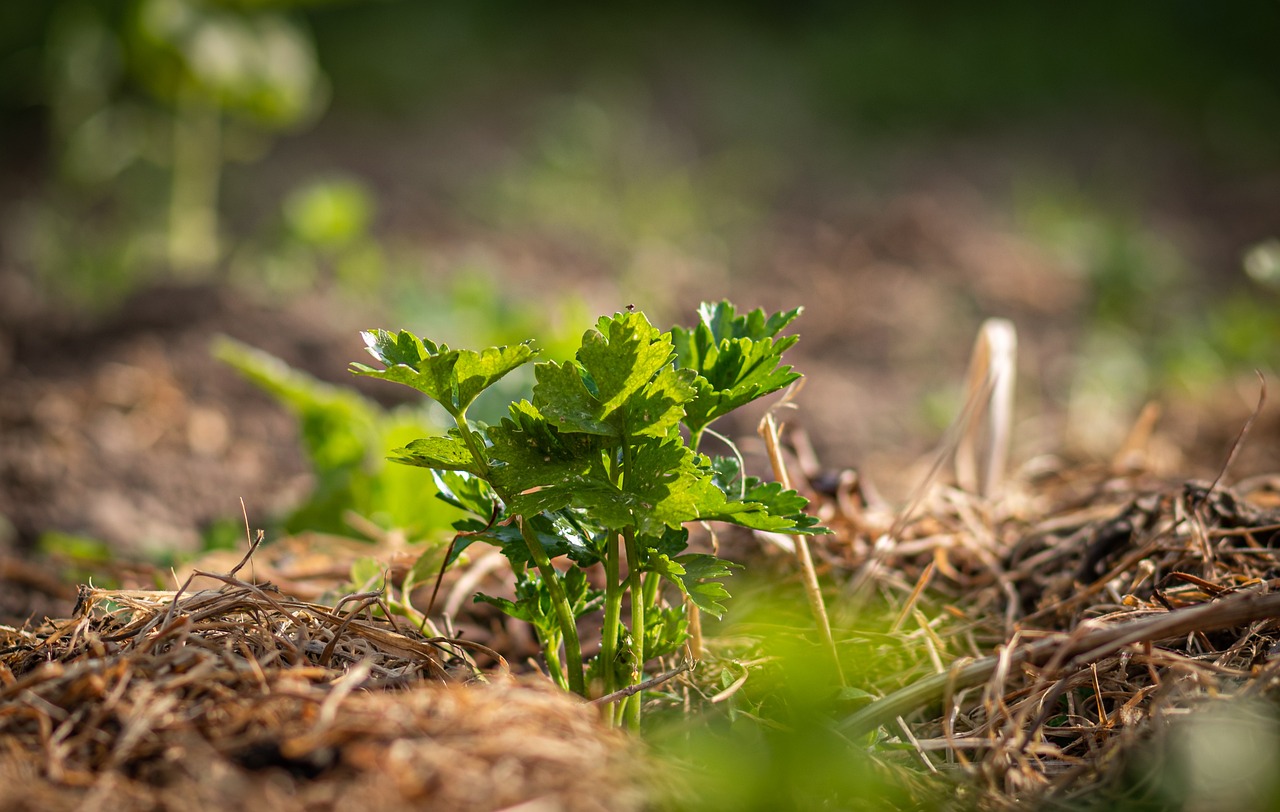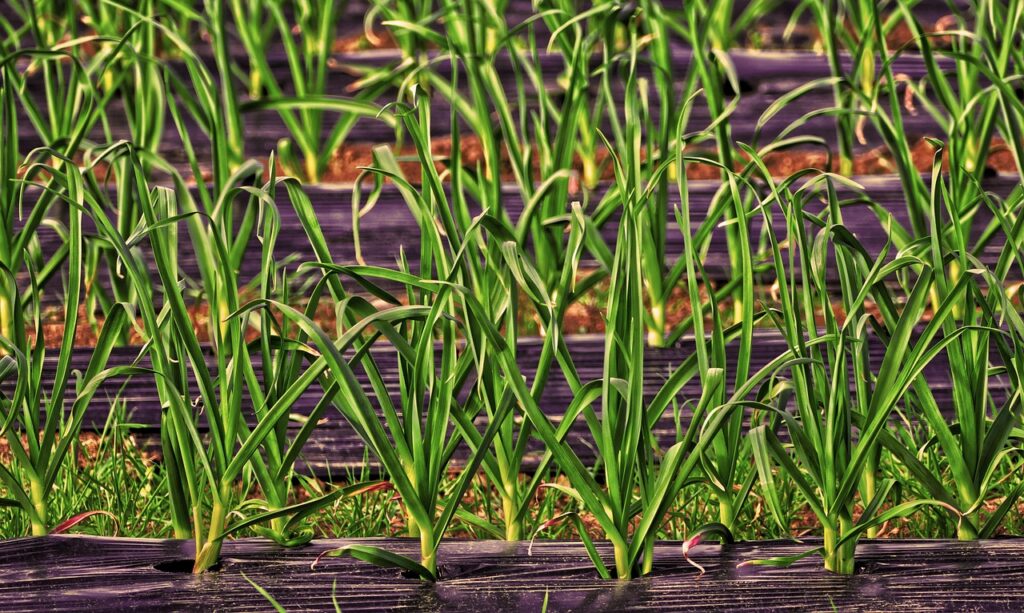Introduction to Mulching in Agriculture
Mulching in agriculture is a widely used technique that enhances soil health, improves crop yield, and reduces maintenance efforts. Studies have shown that mulching can increase crop yield by 20-30% and reduce water evaporation by up to 70%, making it a crucial practice for sustainable farming.
It involves covering the soil surface with various materials to conserve moisture, regulate temperature, and suppress weeds.
How My Journey with Mulching Began
At 18, I was walking through my uncle’s farmland when I noticed something unusual—his fields looked different from the ones I was used to seeing. Instead of bare soil, the ground was covered with a protective layer. Curious, I asked, “What kind of farming is this?”
With a smile, my uncle replied, “This is mulching.” That single word sparked my curiosity.
He explained how mulching helps farmers conserve moisture, control weeds, and improve soil health. I wasn’t satisfied with just the basics—I wanted to know everything. I started asking questions: How does it work? What materials are used? How much does it cost? Can it be applied to our land?
Patiently, my uncle walked me through the process. He showed me the different types of mulch—organic ones like straw and dry leaves, and synthetic ones like plastic sheets. He explained how they reduce evaporation, regulate soil temperature, and even enhance crop yield.
As I listened, a thought struck me: Could we implement this on our own farm?
That day, a simple question turned into a lifelong curiosity. Since then, I’ve been passionate about mulching, exploring its benefits, and now, sharing that knowledge with others through my website
This article explores what is mulching in agriculture, its types, benefits, materials used, methods, techniques, and how to choose the right mulching materials. Additionally, we will discuss plastic mulching in agriculture and the role of mulching machines in modern farming.
let’s know
What is Mulching in Agriculture?
Mulching is a farming practice where a protective layer is applied to the soil surface around plants. This layer acts as a barrier against external elements like excessive sunlight, erosion, and weed growth.
Mulching is crucial for sustainable farming as it minimizes water loss, enhances soil fertility, and reduces dependency on chemical fertilizers and herbicides.
Let’s dive into the different types of mulching and discover how each one benefits the soil and crops!.
Types of Mulching in Agriculture
Mulching can be broadly classified into two categories:
1. Organic Mulching
Organic mulching involves the use of biodegradable materials that decompose over time and enrich the soil. Examples include:

- Straw – Helps retain moisture and adds organic matter.
- Wood Chips & Bark – Improve soil aeration and prevent weed growth.
- Grass Clippings – Provide nutrients as they decompose.
- Compost & Manure – Enrich the soil with essential nutrients.
- Leaves & Crop Residues – Act as a natural soil conditioner.
2. Inorganic Mulching
Inorganic mulching consists of synthetic materials that do not decompose. Examples include:

- Plastic Mulching – Prevents weed growth and retains soil warmth.
- Gravel & Stones – Improve drainage and prevent soil erosion.
- Rubber Mulch – Long-lasting and effective in temperature regulation.
“Now that we’ve explored the types of mulching, let’s uncover its benefits in agriculture and see how it plays a crucial role in improving soil health and crop growth!”
Benefits of Mulching in Agriculture
Mulching provides numerous advantages that enhance agricultural productivity and sustainability:
1. Moisture Conservation
Mulch significantly reduces water evaporation from the soil, helping to retain moisture. Studies indicate that mulching can reduce water loss by up to 70%, making it essential for drought-prone regions like parts of India and Africa.
2. Weed Suppression
Mulching prevents weed growth by blocking sunlight from reaching weed seeds. This reduces competition for nutrients and minimizes the need for herbicides, promoting eco-friendly farming.
3. Soil Temperature Regulation
Mulch acts as an insulating layer, keeping soil cool in summer and warm in winter. This creates an optimal environment for plant roots, enhancing crop growth.
4. Soil Fertility Enhancement
Organic mulch decomposes over time, adding essential nutrients to the soil. Research shows that organic mulches like compost and manure can improve soil fertility by increasing microbial activity and nutrient availability.
5. Erosion Control
Mulching protects soil from erosion caused by wind and water, preserving topsoil quality and preventing the loss of valuable nutrients. Farmers in hilly regions often use straw and wood chip mulch to stabilize soil structure.
6. Disease Prevention
Mulch acts as a barrier between soil and plant leaves, reducing the risk of soil-borne diseases like fungal infections in crops such as tomatoes and peppers.
7. Increased Crop Yield
Studies have shown that mulching can increase crop yields by 20-30%, especially in dry climates where water conservation is critical. For example, vegetable farmers using plastic mulching in India have reported up to 40% higher yields compared to non-mulched fields.
Mulching provides numerous advantages that enhance agricultural productivity and sustainability.
Having explored the benefits of mulching, let’s now dive into the most popular type of inorganic mulching and how it revolutionizes modern agriculture!
Plastic Mulching in Agriculture
Plastic mulching is a widely adopted technique in commercial farming. It involves covering the soil with plastic sheets to enhance crop growth by conserving moisture, suppressing weeds, and maintaining soil temperature.
Farmers often prefer plastic mulch over organic mulch in regions with limited water availability, as it reduces evaporation more effectively. For example, in arid areas like Rajasthan, India, plastic mulching is used in vegetable farming to retain soil moisture and increase crop yield.
Plastic Mulching Process
- Soil Preparation – The soil is leveled, cleared of debris, and enriched with fertilizers if necessary.
- Mulch Selection – The appropriate plastic mulch (black, white, or biodegradable) is chosen based on crop needs and climate conditions.
- Laying the Plastic Mulch – Mulching machines or manual methods are used to spread and secure the plastic sheet over the soil.
- Planting Process – Small holes or slits are made in the plastic for planting seeds or seedlings.
- Irrigation Setup – Drip irrigation is commonly used beneath the plastic to ensure efficient water supply.
- Monitoring and Maintenance – Regular checks are performed to prevent tears, adjust mulch if needed, and manage weeds growing near the edges.
- Removal and Disposal – After the growing season, the mulch is either removed and recycled or left to degrade if biodegradable plastic is used.
Advantages of Plastic Mulching
- Prevents excessive evaporation and conserves water.
- Maintains optimal soil temperature for plant growth.
- Suppresses weed growth, reducing the need for herbicides.
- Reduces soil compaction and improves root development.
- Prevents nutrient leaching and promotes efficient fertilizer use.
Disadvantages of Plastic Mulching
- Non-biodegradable plastic can cause environmental pollution.
- Requires proper disposal or recycling after use.
- Initial setup costs can be high.
Plastic mulching is a widely adopted technique in commercial farming. It involves covering the soil with plastic sheets to enhance crop growth.
Advantages of Plastic Mulching
- Prevents excessive evaporation and conserves water.
- Maintains optimal soil temperature for plant growth.
- Suppresses weed growth, reducing the need for herbicides.
- Reduces soil compaction and improves root development.
- Prevents nutrient leaching and promotes efficient fertilizer use.
Disadvantages of Plastic Mulching
- Non-biodegradable plastic can cause environmental pollution.
- Requires proper disposal or recycling after use.
- Initial setup costs can be high.
Materials Used for Mulching in Agriculture
The choice of mulching material depends on crop type, climate, and farming objectives. Some commonly used materials include:

1. Organic Mulching Materials
Organic mulching materials have been widely adopted in real-world agricultural settings to improve soil health and crop yields. Here are some notable examples:
- Straw & Hay: Used extensively in rice and wheat farming in India and China to retain moisture and suppress weeds.
- Wood Chips & Bark: Commonly applied in vineyards in France and California to prevent soil erosion and maintain soil temperature.
- Compost & Manure: Organic coffee farms in Brazil use composted coffee husks to enrich soil with essential nutrients.
- Leaves & Grass Clippings: Small-scale farmers in Africa utilize banana leaves and grass cuttings to enhance soil organic matter and moisture retention.
These real-life applications highlight the versatility and effectiveness of organic mulching in various agricultural practices across the world.
2. Inorganic Mulching Materials
- Plastic Film – Used for temperature regulation and weed control.
- Gravel & Stones – Commonly used in landscape farming.
- Rubber Mulch – Effective for moisture conservation.
Main Objective of Mulching
Farmers often struggle with soil drying out too quickly, weeds competing with crops, and unpredictable weather affecting plant growth. Mulching addresses these challenges by improving soil conditions and supporting plant growth. Here’s a simple breakdown of each objective:
Conserving Soil Moisture – Mulch acts like a protective cover that reduces water evaporation, keeping the soil moist for longer. This helps plants survive in dry conditions.
Regulating Soil Temperature – Mulch keeps the soil cool in hot weather and warm in cold weather, creating a stable environment for plants to grow.
Suppressing Weed Growth – Mulch blocks sunlight from reaching weed seeds, preventing them from growing and competing with crops.
Improving Soil Fertility – Organic mulch breaks down over time, adding essential nutrients to the soil and promoting healthy plant growth.
Reducing Soil Erosion – Mulch protects the soil from being washed away by rain or blown away by wind, keeping it in place and preventing loss of nutrients.
Enhancing Overall Crop Productivity – By maintaining moisture, temperature, and fertility, mulching helps crops grow faster, healthier, and produce higher yields Mulching Machine: A Modern Approach
Mulching machines have revolutionized farming by making the mulching process efficient and less labor-intensive. These machines help in:
- Spreading mulch evenly across the field.
- Reducing labor costs and effort.
- Enhancing mulching precision and effectiveness.
- Saving time and increasing productivity.
Types of Mulching Machines
- Manual Mulching Machines – Suitable for small farms.
- Automated Mulching Machines – Used in large-scale farming for high efficiency.
Mulching Methods and Techniques
There are various ways to apply mulch, depending on crop requirements and farm conditions.
1. Surface Mulching
Applying mulch directly on the soil surface to conserve moisture and prevent erosion.
2. Sheet Mulching
Using sheets or films (organic or plastic) to cover the soil around plants.
3. Pit Mulching
Filling pits with organic mulch to retain moisture, commonly used in orchard farming.
4. Trench Mulching
Placing mulch in trenches between crop rows to enhance soil moisture.
5. Living Mulching
Growing cover crops like clover or grass between main crops to act as natural mulch.
How to Choose Mulching Materials?
Selecting the right mulch depends on several factors:
1. Climate Conditions
- Dry and arid regions – Plastic or gravel mulch to conserve moisture.
- Humid regions – Organic mulch to improve soil aeration.
2. Crop Type
- Vegetables – Straw, plastic film, or compost.
- Orchards – Wood chips, bark, or stones.
3. Soil Type
- Sandy soil – Organic mulch to enhance water retention.
- Clay soil – Light mulch to improve aeration.
4. Budget Considerations
- Organic mulches are cost-effective but require frequent replenishment.
- Plastic mulching is durable but has high initial costs.
Conclusion
Mulching in agriculture is an essential technique that significantly improves soil health, conserves moisture, and boosts crop yield. Whether using organic or plastic mulching in agriculture, the choice of material should align with the farm’s specific needs. With the advancement of mulching machines, farmers can now apply mulch more efficiently and effectively.
By learning about mulching in agriculture, its benefits, types, and techniques, farmers can make informed decisions to enhance their agricultural productivity sustainably.
know more about the author , The article posted when I was doing Digital Marketing Course in Mysore.
